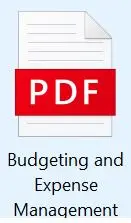Planning for a secure and stress-free retirement starts with smart budgeting and expense management. Our Expense & Retirement Budget Management Checklist provides essential steps to help seniors and caregivers take control of finances, manage daily expenses, and prepare for future costs. Whether you’re adjusting to a fixed income, planning for long-term care, or looking to maximize your savings, this guide will help you make informed financial decisions for a more stable and comfortable retirement.
Smart financial planning starts with the right strategies. Keep this checklist handy to stay on track. Looking for expert advice? Explore our local directory to connect with financial advisors, financial planners, estate planners and more.

Click the icon above and click the website address star
Creating and maintaining a well-structured budget in retirement ensures financial security, prevents overspending, and helps manage both expected and unexpected expenses. This checklist provides step-by-step guidance on how to track expenses, manage cash flow, and optimize financial stability throughout retirement.
Need Help? Find Trusted Professionals or browse our Directory.
Send Us An Email